General Motors ELECTROVAN 1966 first ever fuel cell vehicle and the battery electric ELECTROVAIR II
The General Motors ELECTROVAN is the first Hydrogen Fuel Cell prototype unveiled to the public. The event dates back nearly fifty years ago, on October 28th 1966. It happened at the General Motors Technical Centre at Warren, Michigan in the U.S.A. It was a Press Conference opened by Edward N. Cole, Executive Vice President of the General Motors Corporation at the time. He was assisted by a staff of Researchers who participated in this huge program initiated in 1956 and investigating a wide variety of energy conversion alternative to the gasoline internal combustion engine. "This meeting is a milestone event and the presentation is focused on state of the art on electric vehicles with the battery electric ELECTROVAIR II and the hydrogen fuel cell ELECTROVAN prototype as running examples" announced Edward N. Cole in his introduction speech. We are reproducing some excerpts of presentation conferences during the Warren Technical Center Conference and allow a better understanding of the situation nearly 50 years ago. After ten year of investigations in alternative power source for personal mobility, the General Motors Technical Research Staff introduced two electric drive prototypes based on existing gasoline engine current models. The scope of investigation concerned electric drive running prototypes with similar passenger capacity and operating performance compared to the gasoline engine equivalent vehicles.
One prototype is the battery electric ELECTROVAIR II with silver-zinc batteries capable of an operating range of 40(65 km) to 80 miles(130 km) between recharge and at an exorbitant cost. In a lead-acid system providing the same 27 horsepower-hours, the batteries alone would weigh about four times as much and the system would require about three times the space.
The limited range of the battery electric ELECTROVAIR called for investigating hydrogen fuel cell as an alternate energy source. The battery is a system where the fuel is stored within the energy converter itself, and which has the feature of being electrically reversible or rechargeable. The fuel cell is a system where the fuel is carried in tanks and burned electrochemically in the energy converter. This time the energy source did not fit in the current Corvair sedan mainly because of the size of liquid hydrogen and liquid oxygen storage vessels. A General Motors van was selected for this exercise and resulted in the ELECTROVAN, the first hydrogen fuel cell vehicle ever introduced to the public. The fuel cell technology for the General Motors ELECTROVAN was developed with Union Carbide. Union Carbide had spent several years developing fuel cell technologies. Union Carbide was also in industrial gases, in particular liquid hydrogen and liquid oxygen which allowed sufficient capacity. Liquid oxygen and liquid hydrogen must be stored in vacuum-jacketed cryogenic storage vessels due to their extremely low temperature.
The ELECTROVAN weights 7100 lbs.( 3220 kg) with 3650 lbs.(1655 kg) power train weight while gasoline GMC VAN weights 3250 lbs.(1474 kg) with 870 lbs.(394 kg) powertrain weight. The acceleration of the ELECTROVAN is announced at 0-60 mph (0-96 kph) in 30 seconds while the GMC VAN requires 23 seconds. Top speed are similar with 70 mph (112 kph) for both vehicles. The ELECTROVAN range is quoted between 100 (160 km) and 150 miles (240 km)with full storage tanks. Concerning the purpose of this research and development program, Dr. Lawrence R. Hafstad, Vice President in charge of General Motors Research Laboratories mentioned "The principal reason for the current revival of interest in the electric car is its promise to contribute to the reduction or elimination of air pollution." He insisted that intense research was undergone to reduce the pollutants emission of the gasoline engine at the time but that this required additional hardware and that the crucial element is the cost of the added hardware compared to possible alternate solutions like the electric car. At the time power electronics did not exist and solid state components made electric controls bulky, costly and heavy. Dr. Craig Marks, on the other hand, explained in his speech the electric drive conceived by Delco Division beyond the battery pack and the electric motor required several additional hardware* to operate the electric motor. These include Inverter Modulator, Trigger Box , Logic Box, Voltage regulator and an oil cooling system to control the temperature of the motor and the electronic controls.
The public introduction of these electric cars in October 1966 at the GM Technical Centre was really a milestone. General Motors would introduce a Zero Emission battery electric automobile on January 3rd 1990 at the Los Angeles Auto Show with the GM Impact. The Impact' system were extensively tested and in 1996, the Impact became the limited production EV1. Over 1000 units were produced and leased to customers in California and the Southwest. The EV1 still had limited operating range and required some time for recharging. In 2007, General Motors introduced the Chevrolet Volt. The heart of the Volt is the Voltec electric propulsion system, which combine battery-only electric driving with an efficient gasoline engine oper ating an on-board electric generator giving the Volt up to 379 total miles of driving before having to recharge the battery or fill up the small gasoline tank. . In July, 2013, GM and Honda announced a long-term collaboration to co-develop next-generation fuel cell and hydrogen storage systems, aiming for potential commercialization in the 2020 time frame. By May 2014, General Motors’ fleet of fuel cell vehicles recently passed 3 million miles of hydrogen-powered, real-world driving. Some individual vehicles have accumulated more than 120,000 miles. By GM’s estimate, using hydrogen to power these vehicles, the fleet has avoided 157,894 gallons of gasoline consumption. *Definitions of electric drive hardware for 1966 ELECTROVAIR and ELECTROVAN as introduced by Dr. Craig Marks in his speech Motor : Inverter Modulator (High power components) Trigger Box Logic Box Voltage Regulator Oil Cooling System photos from GM Heritage Media Archives Wallpapers of General Motors ELECTROVAN 1966 first ever fuel cell vehicle and the battery electric ELECTROVAIR IIRelated review
|
|||||||||||||||||||
|---|---|---|---|---|---|---|---|---|---|---|---|---|---|---|---|---|---|---|---|








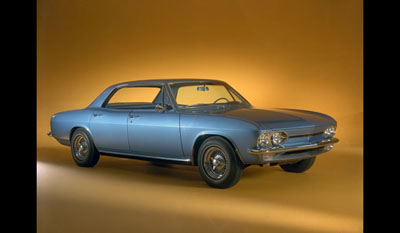
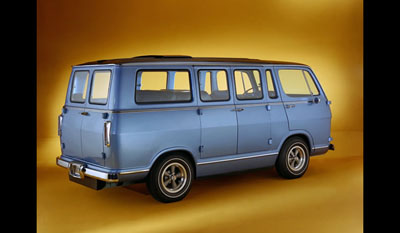
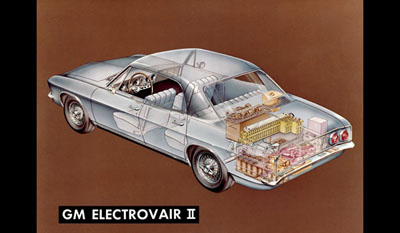
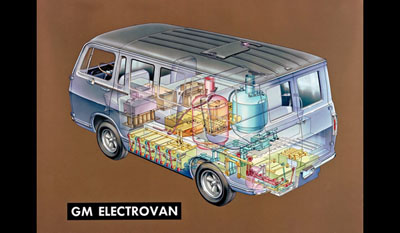
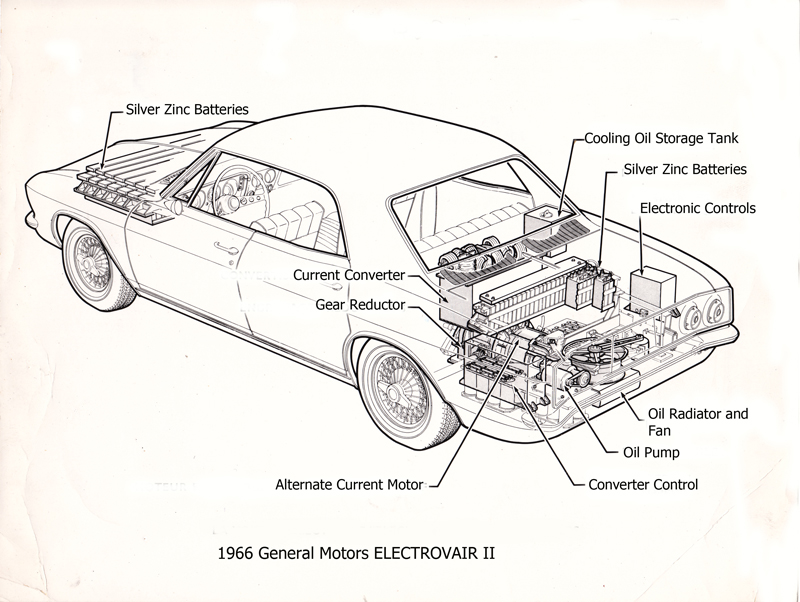
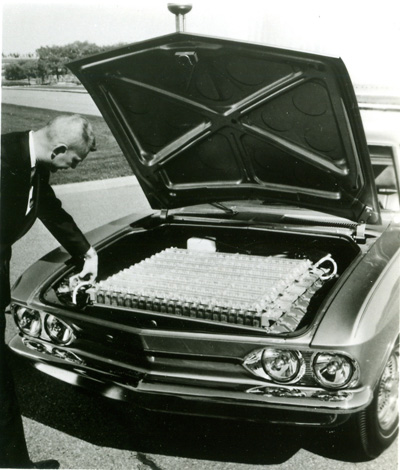
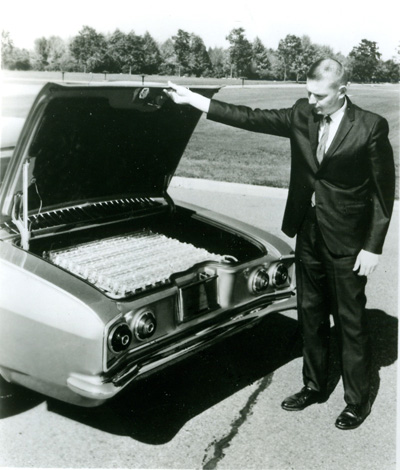
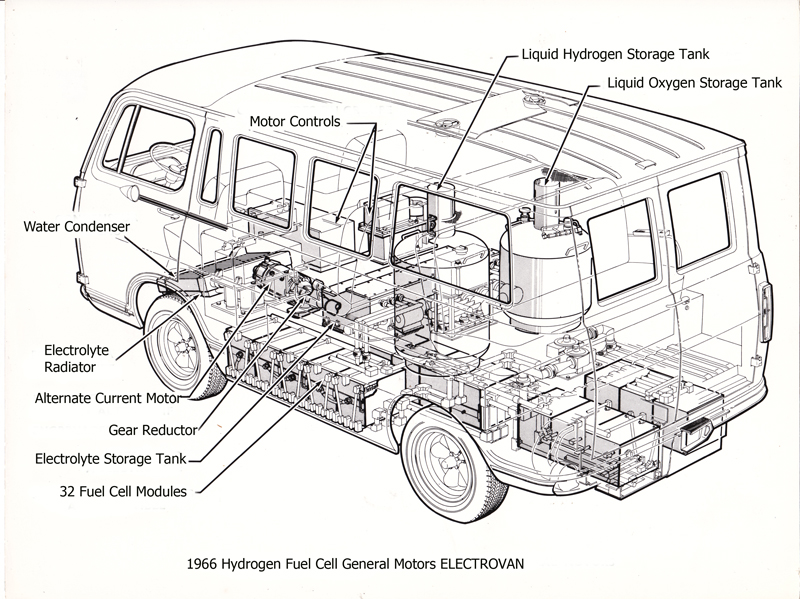
800x619.jpg)







